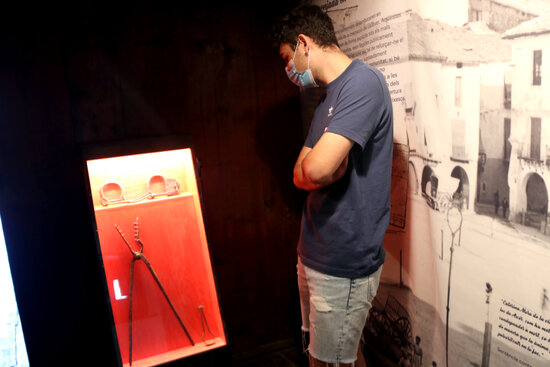What to expect from the witchcraft exhibition in the Pyrenees
Wax busts, medicine stones, and medieval documents illustrate profound history of witchcraft in Catalan mountains

Whether or not someone practices witchcraft is not exactly a common concern nowadays, with witch hunts mainly relegated to the realm of historical analysis and only recently seen through the lens of feminism and oppression.
The exhibition ‘They were talked about…and they were there’ (‘Se’n parlave…i n’hi havie’ in Catalan) illustrates the research carried out between 2015 and 2017 on the phenomenon of witchcraft in the Pyrinees.
The exhibition can be found in the Ecomuseum of Esterri D’Àneu, a town in the Pyrenees mountains in north Catalonia. It’s been documented that in this territory, some of the first trials against witchcraft in Europe took place.
A wax bust of Catherine Desayes, known as ‘La Voisin’ (1640-1680), can be found at the exhibition, a French fortune-teller who made contract poisonings and was a professional supplier of witchcraft items.
Curators have also incorporated medicine stones and wax pieces with printed images of the Calvary of Christ that witches used as protective dowries.
You can also consult an excerpt from the book ‘Ordinances of the Vall d’Àneu’ written in 1424. It is the oldest Catalan legal document that refers to ‘crime of witchcraft’, and it describes what would have been the scene of the first legal conviction of the crime of witchcraft in Europe.
The location of the exhibition is ideal because in the Pyrenees there are still people who believe in it and even avoid talking about it out of fear.
There are houses where it is said that witches lived and the exhibition mentions two of them: Casa Rugall de Montrós, and Casa Tomàs.
The witch-hunt in Catalonia
Júlia Carreras, a philologist and researcher on witchery and ethnobotany, explained to the Catalan News Agency that these are often not just legends but real situations experienced first-hand by men and women until the early 1940s.
It is estimated that over one thousand people, mostly women, were prosecuted and sentenced for witchcraft in Catalonia between the 15th and the 18th century, more than any other territory in the Iberian peninsula.
Just the fact of having a With just a single indication of a that a woman was suspected of being a witch, local courts had the authority credit to convict her. For this reason, many women went into exile to other territories.